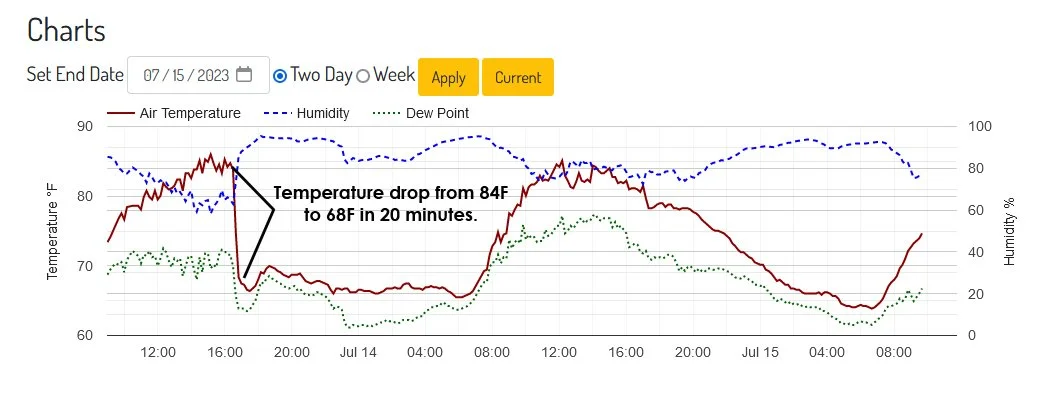How Water Controls Temperature
/The photos below were taken on July 13, 2023 during the late morning. The day started with clear skies but soon solar heating and a humid air destabilized the air mass. The Cumulus clouds show currents of rising air. The moist air condensed cloud droplets to form cumulus clouds which expanded upward throughout the afternoon. Finally a few thunderstorms developed. The photo on the left shows Cumulus cloud bases from almost directly below. The photo on the right shows Cumulus congestus clouds which evolved into thunderstorms.
The top chart below shows a graph of temperature changes on the 13th, 14th, and 15th. A sharp drop in temperature is shown on the first graph when cooler air reached our weather station. The air was flowing out of a thunderstorm as rain cooled air descended to the ground. The cooling was aided by the evaporation of rain drops. Evaporation requires heat so they air cools as the heat evaporates the water. As the air mass aloft cools it becomes more dense and heavier. The heavier air descends, usually with gusty winds flowing out of the leading edge of the storm. Gravity wins! The cooler air mixes with warmer air which warms the cool air and cools the warm air. That is one example of how important water is the life on Earth. As it changes from water vapor to liquid water or snow and ice it regulates global temperatures. As the most important Greenhouse Gas, water vapor cools and warms the planet helping to keep temperatures within boundaries that keep life possible on Earth.
You can see 10-minute observations and the accompanying graphs from our automated weather station on our homepage and in the section about the weather stations and making observations.





